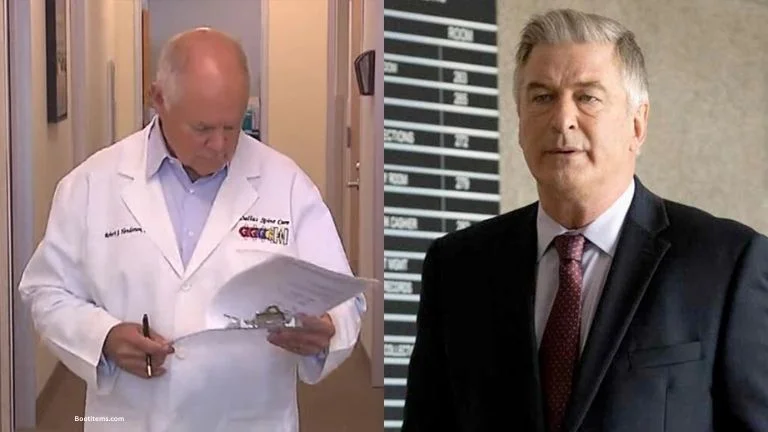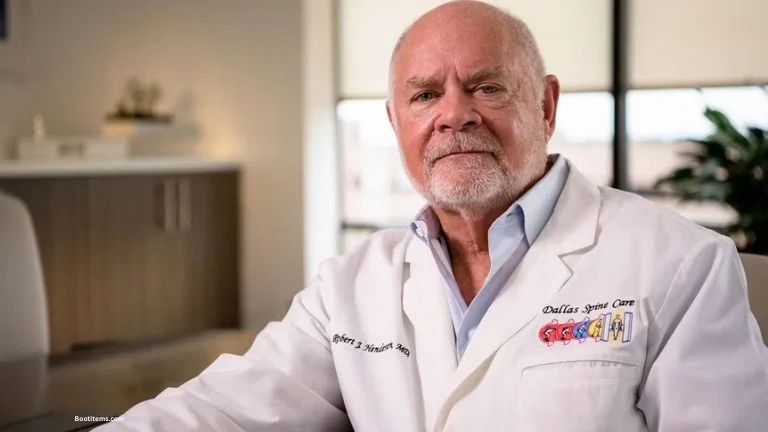Dr Robert Henderson: The Surgeon Who Exposed Dr Death
Dr Robert Henderson, a spine surgeon in Dallas, played a crucial role in exposing Christopher Duntsch, known as “Dr Death,” for his medical malpractice. Henderson’s efforts led to Duntsch’s license revocation and life imprisonment.
The Dr Death Case: Christopher Duntsch’s Trail of Destruction
Christopher Duntsch, infamously known as “Dr Death,” was a neurosurgeon who operated on 38 patients in Dallas and Collin Counties over a span of less than two years. Of these patients, 33 suffered injuries, with many experiencing life-altering mutilations. Two patients died as a result of his actions.
Duntsch’s Medical Career and Red Flags
Duntsch began his career in Dallas in 2011, joining the Minimally Invasive Spine Institute in Plano as a practicing physician. He also secured a position at Baylor Regional Medical Center (Baylor-Plano), where he had the opportunity to operate on various patients. However, it quickly became apparent that Duntsch posed a significant danger to his patients, even botching simple procedures.
One of the most alarming incidents occurred when Duntsch was tasked with fixing a woman’s compressed nerve. Instead, he cut an important vessel, leading to the patient bleeding to death. Despite these red flags, Duntsch continued to practice and move between hospitals.
The Extent of Duntsch’s Malpractice
The scale of Duntsch’s malpractice was staggering. Of the 37 patients he operated on in Dallas over approximately two years, 33 were harmed or killed in the process. Patients suffered from nerve damage, paralysis, or worse – death from blood loss or stroke caused by significant injuries during surgery.
One of Duntsch’s most tragic cases involved his childhood friend, Jerry Summers. Summers underwent a spinal operation at Baylor Medical Center, performed by Duntsch, and emerged from the surgery as a quadriplegic. Sadly, Summers passed away in 2021 due to an infection linked to complications from the operation.
Dr Robert Henderson’s Involvement in the Case
Dr Robert Henderson, a veteran spinal surgeon in Dallas with over 30 years of experience, became involved in the Duntsch case when he was assigned to perform corrective surgery on two of Duntsch’s patients.
Henderson’s Initial Encounter with Duntsch’s Work
Henderson’s first encounter with Duntsch’s work came through a phone call from a local hospital. He was informed that a new surgeon had performed so poorly that a patient who had walked into the hospital on her own was now unable to move her toes. This patient was Mary Efurd, and her case would prove to be a turning point in exposing Duntsch’s malpractice.
The Mary Efurd Case
When Henderson examined Mary Efurd’s case, he was shocked by what he found. Upon studying the x-rays and Duntsch’s operative notes, Henderson realized that Duntsch had not performed the procedure he had intended to do. In fact, Duntsch had caused severe damage to Efurd’s spine.
During the corrective surgery, Henderson discovered:
- Three misplaced holes in Efurd’s spinal column where Duntsch had tried and failed to insert screws.
- A screw jabbed directly into her spinal canal.
- The same screw had skewered a bundle of nerves controlling one leg and the bladder.
- A nerve root had been completely removed, explaining why Efurd couldn’t move her leg.
Henderson described Duntsch’s operation on Efurd as an “unmitigated atrocity.”
Henderson’s Decision to Take Action
After witnessing the extent of damage caused by Duntsch, Henderson decided he needed to take action. As a doctor trained to “first do no harm,” Henderson felt a moral obligation to prevent further harm to patients. Despite not being the type of person to typically get involved in others’ business, Henderson embarked on what would become a crusade against Duntsch.

The Investigation and Efforts to Stop Duntsch
Dr Henderson, along with Dr Randall Kirby, another surgeon who had witnessed Duntsch’s malpractice, began a concerted effort to stop Duntsch from operating and to have his medical license revoked.
Gathering Evidence
Henderson and Kirby started by gathering evidence of Duntsch’s malpractice. They reviewed cases, spoke with other medical professionals, and documented the pattern of harm caused by Duntsch. Their investigation revealed a shocking trail of botched surgeries and patient injuries.
Reporting to the Texas Medical Board
The two doctors reported their findings to the Texas Medical Board. They provided detailed accounts of Duntsch’s surgical errors and the resulting patient harm. However, the process of investigating and taking action against a licensed physician is often slow and complex.
Challenges in Stopping Duntsch
Despite their efforts, Henderson and Kirby faced several challenges in their quest to stop Duntsch:
- Systemic failures in the healthcare system allowed Duntsch to continue practicing despite numerous complaints.
- Duntsch’s voluntary resignation from Baylor-Plano meant that his actions were not reported to the National Practitioner Data Bank.
- The slow pace of the Texas Medical Board’s investigation allowed Duntsch to continue operating at different hospitals.
The Final Steps to Justice
As Duntsch continued to operate and cause harm, Henderson and Kirby intensified their efforts to stop him.
Duntsch’s Last Operations
Duntsch’s final operation took place at the now-closed University General hospital. During this procedure, Duntsch mistook a patient’s neck muscle for a tumor, an error that Dr Kirby referred to as “attempted murder.”
License Suspension and Revocation
Finally, in June 2013, Duntsch’s medical license was suspended. It was fully revoked in December of the same year. However, the damage had already been done to numerous patients.
Criminal Charges and Trial
In 2015, Duntsch was charged with six counts of aggravated assault with a deadly weapon (his surgical tools). During his 2017 trial, damning evidence was presented, including an email Duntsch had sent to his former assistant, Kimberly Morgan. In this email, Duntsch wrote, “I am ready to leave the love and kindness and goodness and patience that I mix with everything else that I am and become a cold blooded killer.”
Conviction and Sentencing
Ultimately, Duntsch was found guilty of injury to an elderly person in relation to Mary Efurd’s case. He was sentenced to life in prison, where he remains to this day.
The Aftermath and Lessons Learned
The Duntsch case exposed significant flaws in the medical system and raised important questions about patient safety and physician accountability.
Impact on Patients and Families
The impact of Duntsch’s actions on his patients and their families was devastating. Many patients were left with permanent disabilities, chronic pain, and ongoing medical issues. The families of those who died continue to grapple with their loss.
Systemic Changes and Reforms
The case prompted discussions about necessary reforms in the medical field, including:
- Improved background checks and vetting processes for physicians.
- Better communication between hospitals and medical boards.
- Faster response times to complaints about physician malpractice.
- Enhanced patient safety measures in surgical settings.
Dr Henderson’s Continued Advocacy
Following the Duntsch case, Dr Henderson has continued to advocate for patient safety and improved oversight in the medical field. While semi-retired and performing only about 50 spinal surgeries a year, Henderson remains committed to fighting for patients’ rights and working to fix the system that allowed Duntsch to practice for so long.
The Legacy of the Dr Death Case
The story of Christopher Duntsch and the efforts of doctors like Robert Henderson to stop him have left a lasting impact on the medical community and public consciousness.
Media Coverage and Public Awareness
The case has been widely covered in the media, including:
- A podcast titled “Dr Death” produced by Wondery in 2018.
- A Peacock drama series also titled “Dr Death,” starring Joshua Jackson as Duntsch and Alec Baldwin as Dr Henderson.
- Numerous articles, books, and documentaries exploring the case and its implications.
This extensive coverage has raised public awareness about the importance of patient safety and the potential consequences of medical malpractice.
Lessons for the Medical Community
The Duntsch case serves as a stark reminder to the medical community of the critical importance of:
- Rigorous peer review and oversight.
- Prompt reporting and investigation of suspected malpractice.
- Prioritizing patient safety above all else.
- The courage to speak up when witnessing potential harm to patients.
Ongoing Discussions About Healthcare Reform
The case continues to spark discussions about necessary reforms in healthcare, including:
- Improving transparency in medical licensing and disciplinary processes.
- Enhancing communication between healthcare institutions to prevent problematic physicians from simply moving to a new hospital.
- Strengthening patient protections and rights.
More Than a Married Couple Ending

Samantha Yates is a creative writer and journalist with expertise in content creation and editing. She holds an MA in Creative Writing and brings professional experience from Lionbridge, where she developed engaging content for leading technology companies






